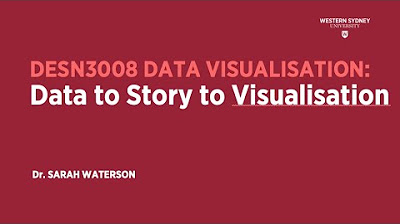Data Storytelling - Stefano Carnevalli - Parte03
Summary
TLDRStefhany introduces 'Data Tortelli', a storytelling tool co-developed with Rafael to aid in data analysis and storytelling. The tool is divided into three parts: presenting the story, exploring data, and constructing the narrative. Stefhany explains each part, emphasizing the importance of identifying the target audience, objectives, and credible data sources. She also discusses the significance of insights and surprising elements in storytelling. The session concludes with a practical example involving a hotel entrepreneur seeking the best city for a new hotel based on tourist flow data.
Takeaways
- 😀 The tutorial introduces a tool called 'Tutela em Parte 3,' developed by Stefhany and Rafael to assist with data analysis and storytelling.
- 🔍 The tool is divided into three parts: presenting the story, exploring the data, and constructing the narrative.
- 🎯 Defining the target audience is essential for any data presentation. Understanding who the data is being presented to helps tailor the story.
- 📊 It's important to clarify the objective of the data presentation: Why is it being shown? What is the ultimate goal of presenting this information?
- 🛠️ The tool helps users plan out the details of their presentation, such as the medium (TV, tablet, etc.) and the format (individual, large audience, etc.).
- 🗂️ Exploring available data and determining if additional data is needed is a key step. Credible data sources are essential for building trust in the analysis.
- 📖 The most important aspect of data storytelling is generating insights that can surprise or intrigue the audience. This makes the story more impactful.
- 📝 Once the data and insights are clear, the user can begin constructing the story and choosing a theme to guide the narrative.
- 📈 The final step is selecting the right visuals, such as charts or graphs, to represent the data effectively.
- 💡 A practical example given involves a hotel chain looking to find the best city to open a new hotel, using tourism and population data to guide the decision.
Q & A
What is the main purpose of the video presented by Stefhany?
-The video aims to introduce and explain the use of the 'data storytelling' tool called 'Câmbio Datas Tortelli,' which was developed to assist in analyzing and presenting data stories effectively.
What are the three main areas of the 'Câmbio Datas Tortelli' tool?
-The three main areas of the tool are: 1) The right side, focused on presenting the story, 2) The left side, used for exploring the data, and 3) The center, which is used to build the story.
Why is it important to define the target audience when presenting data?
-Defining the target audience is key to tailoring the presentation and ensuring that the data story is relevant and understandable to the people viewing it. It helps focus the presentation and makes it more impactful.
What considerations should be made when preparing a data presentation?
-Key considerations include identifying the target audience, determining the main objective, deciding on the format (e.g., TV, tablet, or notebook), understanding the presentation setting (large or small audience), and gathering all necessary data and resources.
What role do credible data sources play in data storytelling?
-Credible data sources enhance the reliability and trustworthiness of the analysis, ensuring that the data presented is accurate and supported by reputable institutions or organizations.
How can data be selected and filtered for the presentation?
-The presenter should gather relevant data from available sources, identify any missing data that is needed, and ensure that the selected data aligns with the story and the audience's expectations.
What is the significance of insights in data storytelling?
-Insights are crucial as they provide key takeaways and surprising revelations that engage the audience. The goal is to generate insights that leave a lasting impression on the audience and support the narrative.
What is meant by the 'hero's journey' in the context of data storytelling?
-The 'hero's journey' refers to the narrative structure of the data story, where the presenter constructs a compelling message that resonates with the audience. It's about guiding the audience through a well-thought-out storyline to achieve the desired outcome.
What factors should be considered when choosing visual elements for the data presentation?
-Choosing visual elements involves selecting the appropriate types of graphs, charts, and images to represent the data clearly. These visuals should support the narrative and help communicate key points effectively.
What example does Stefhany provide to illustrate data storytelling?
-Stefhany provides an example of a hotel chain that needs to identify the best city for opening a new hotel. The data storytelling process involves analyzing tourist flow data and presenting it in a concise and engaging way to help the business make an informed decision.
Outlines

This section is available to paid users only. Please upgrade to access this part.
Upgrade NowMindmap

This section is available to paid users only. Please upgrade to access this part.
Upgrade NowKeywords

This section is available to paid users only. Please upgrade to access this part.
Upgrade NowHighlights

This section is available to paid users only. Please upgrade to access this part.
Upgrade NowTranscripts

This section is available to paid users only. Please upgrade to access this part.
Upgrade NowBrowse More Related Video

Intro to Data Visualization with R & ggplot2 | Google Data Analytics Certificate

Data Visualization Techniques | Data Visualization Techniques and Tools | Data Visualization Trends

DataVis : Pod 02 Data Storytelling overview

What is Einstein Copilot for Tableau?

Copilot for Microsoft 365 – Game Changer or Risk Maker?

Os MELHORES Livros para Analista e Cientista de Dados
5.0 / 5 (0 votes)